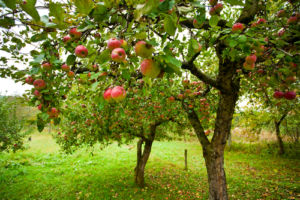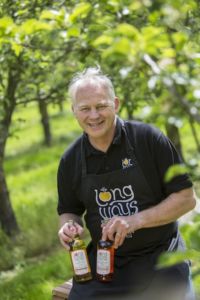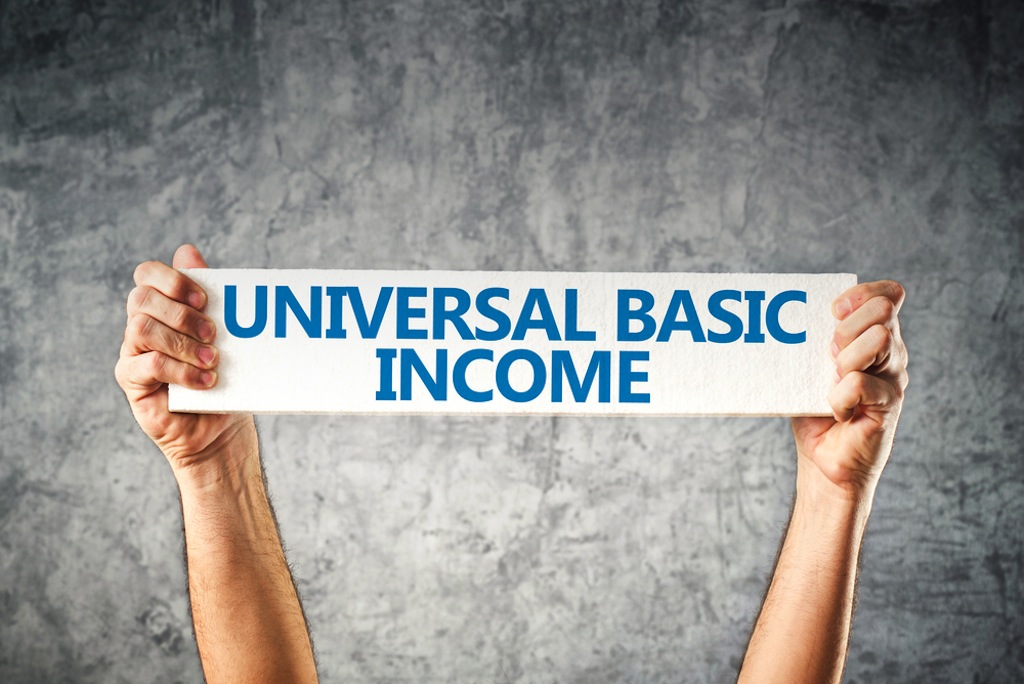No farm? No worries. How a Tipperary urbanite ended up producing award-winning ciders.
Over 35 years ago, James O’Donoghue’s curiosity in farming was triggered during a summer holiday, spent helping out on his grandparents’ farm. Later, as a trainee farm manager, he graduated Student of the Year from agricultural college, going on to gain experience at home and abroad across a range of agricultural enterprises.
My pathway to farming
Surprisingly, I’m not actually from a farming background. Dad was a bank manager, and it was my grandparents who had the farm. Every summer holiday, we were quickly out the door and down to the farm. It’s from that experience, my initial interest grew. In 1985 I qualified as a farm manager having been awarded a BoI Farm Start Award, for achieving first place in farm management. I then worked in Saudi Arabia for four years on a large dairy farm, before moving back to Ireland to manage a private co-op. Over the course of the next 15 years, I was employed as farm manager at O’Shea Brothers’ vegetable farm in Co. Kilkenny. At the time, they were farming over 3,000 acres with a staff of 110.
“We were getting a lot of calls for apples from craft cider-makers, but we couldn’t supply them, as we were contracted to C&C with our original 20-acre plantation.”
What inspired you to grow cider apples?
I always wanted to start my own business. I attended some ‘start your own business’ courses and one the main points emphasised, was to firstly focus on finding your market and then securing it. In 1998, I was lucky enough to be awarded a long-term cider-apple contract; to supply a specific ‘bitter-sweet’ type of apple to C&C (Bulmers) in Clonmel. To fulfill this contract, I purchased a 45-acre farm in 1998 and began planting a 20-acre orchard. Happily, with this apple contract secured, I didn’t have to worry about sales or marketing; all I had to do was to get out there and grow the crop. It is an expensive operation. In today’s money, it will cost you the bones of €10,000 per acre in establishment costs. Then in 2004, I decided to return home to farm full-time. The cider apples were starting to come into their own; to pay for themselves and give back an income.
You planted an additional five acres of apples – why was that?
There were two reasons. Firstly, to protect against the threat of a bypass expected to go through my land. Secondly, to supply the expanding craft cider market that was just beginning to take off at the time. We were getting a lot of calls for apples from craft cider-makers, but we couldn’t supply them, as we were contracted to C&C with our original 20-acre plantation. So we decided to plant the extra five acres in 2006. Later, we were in a position to supply five to six, of the well-known craft cider makers, located around the country.
“Some people say that the bumblebee has an overcoat on him whereas the honey bee doesn’t. If the weather is not very conducive to a honeybee, the bumblebee will still be out working.”
What motivated you to make your cider?
It was like a set of dominoes; a natural progression, helped by developing a real interest in the art of fermentation. Along the way, we got great assistance from the likes of the SuperValu Food Academy and the Local Enterprise Office. In September 2014, we started a company, to produce our cider under, the LongWays Cider Company brand and our LongWays tagline is: ‘You would have to go a long ways to find a better cider’.
Making a good cider
Real cider-makers use real apples, just like the bitter-sweet apples that we grow. Once harvested; you are fermenting the whole lot; you have to use them straight away as they don’t store; and for that reason, you can only make traditional cider, once a year in the autumn. If you make a mistake, you have to wait a year, go back to square one and start all over again.
The importance of bees
We have two apiaries on the farm, one is external, owned by another chap, but we also bring in a lot of bumblebees to help with the pollination of blossom over a three week period. The bumblebee can fly at lower temperatures and higher wind speeds than the honey bee. Some people say that the bumblebee has an overcoat on him whereas the honey bee doesn’t. If the weather is not very conducive to a honeybee, the bumblebee will still be out working. They are a native Irish bumblebee and are allowed to return to the wild.
“Every year we trial, six or seven different types of yeast. Last year we got in a half a kilo, of a particular type of yeast, and the cider it produced was just beautiful.”
How do you ferment apples?
To answer that question, it’s important to say that there are two methods in cider making. One group leaves it totally to nature and is lucky enough to have good yeast on their equipment, and in their environment, that produces a lovely cider. The disadvantage can be; if you don’t have a nice strain of yeast; you could get terrible ciders coming off, and that’s the risk you are taking every year.
Then there is another type of cider maker, who likes to have full control; manage the process from start to finish, and that’s my category. After fermentation, we rack off the ciders, we close them down and mature them for five months. I love to have full control, as I want a complete consistency of my product. What we say, on the back of our bottles, is that ‘it’s traditional cider making, using modern technology.’
Using wine making technology, I believe brings an edge to the quality of cider and is a step above, and a step away from the traditional type of cider making. It’s a combination of the process with the temperature and the yeast. Every year we trial, six or seven different types of yeast. Last year we got in a half a kilo, of a particular type of yeast, and the cider it produced was just beautiful.
“It was a fantastic achievement winning a gold medal in the UK, the home of cider-making. ”
Cider awards
LongWays is a premium cider. We use real apples, all of the time, and our ciders are very high in apple juice content. In 2015 we won two awards. Firstly, we achieved gold in the Irish Food Awards. Then we entered the British Bottlers Institute Awards in London and also picked up a gold medal there. The competition was dedicated to cider only. It was a fantastic achievement winning a gold medal in the UK, the home of cider-making. In 2017 we won a Great Taste Award star for our Tipperary cider, and all three ciders are shortlisted for the 2017 Blas na hEireann awards.
Product and customer segment
It breaks down into three distinct categories. Originally we have the LongWays Tipperary Cider, made from bitter sweet apples. It is a real traditional cider with real tannins; you’ve got the astringency in the mouth and the level of dryness. That type of cider suits the over-35 age group. It’s very good with food; excellent with spicy food. It has the strength to cut through the spiciness of food, because of the tannin levels in it.
The LongWays Sweet Katy Cider is aimed at the under-35 age group. It’s back sweetened with an apple juice; it has lovely apple tones. We put a small bit of bitter sweet in it, just to give it a slight tinge of tannin, which gives it a tiny bite. It has a medium level of sweetness, but it’s not too sweet.
And then we have our elderflower cider, which is made from apple and infused with wild elderflower from south Tipperary. It comes with a slight touch of a pink blush, and it’s aimed at the female market.
Route to market
At the moment we have a national listing with SuperValu and are stocked across a number of its 224 nationwide stores. We have also developed a handful of regional distributors to distribute locally in different regions around Ireland; with one each in Galway, Donegal, and Tipperary.
LongWays Cider also uses social media to help build brand awareness and to develop consumer interaction. It helps keep LongWays in people minds and creates brand recognition, leading to a potential purchase in a shop or bar. At our last media event, LongWays received over 62,000 hits on its Facebook page which was an excellent response.
“My vision in five years’ time would be to own a cidery, but this will depend on legislation, currently being debated in the Dáil.”
Harvest time
Mostly the neighbours help out. I have my son, Shane, who is of age to be able to help as well. They are all of great assistance. Everything is mechanical. You shake the trees, and the apples are picked up straight away from the ground. We would usually start harvesting in the first or second week of October, and we wouldn’t finish until the third week of November, but it all depends on how quickly the factory can take in your apples. The last weeks in November and December the focus moves from the orchard to looking after the fermentation.
Vision for the future
My vision in five years’ time would be to own a cidery, but this will depend on legislation, currently being debated in the Dáil. People could come to visit the premises, and we could showcase our premium cider, affording the opportunity of a shop window, helping promote the LongWays brand and continuing to help build its local and national profile.







